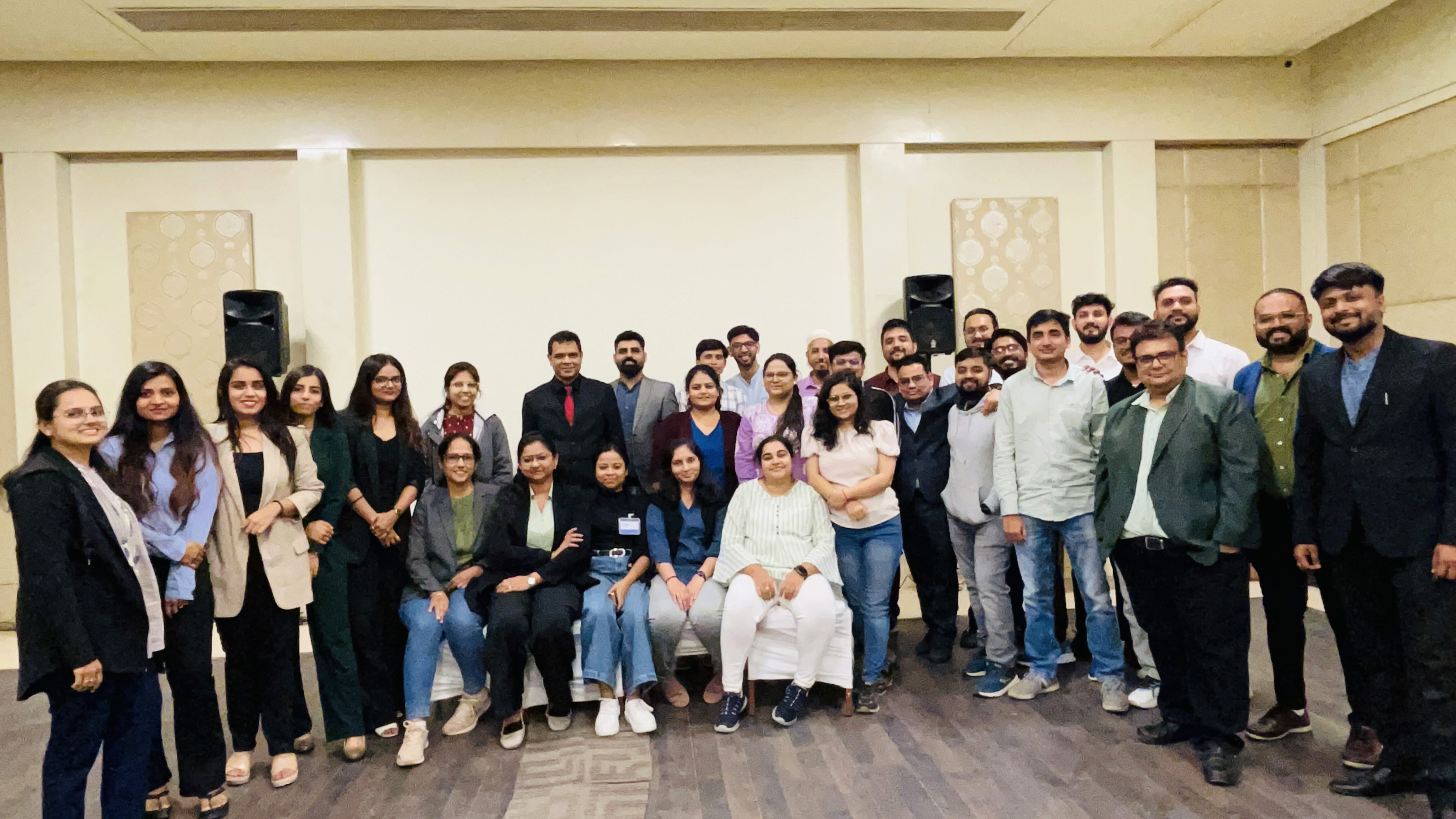Currently, the mantra is circulating in traditional retail that online retail will soon reach its growth limit, at least in crucial sectors. The error in predicting this couldn't be higher. On the contrary, there is much to suggest that things will get worse for the digitally suspended shop on the corner.
For instance, here’s a statistic from one of the leading firms: The Indian E-commerce industry has been on an upward growth trajectory and is expected to surpass the US to become the second-largest E-commerce market in the world by 2034. The E-commerce market is predicted to reach Rs 13,97,800 crore (US$ 200 billion) by 2027 from Rs 2,69,076.5 crore (US$ 38.5 billion) in 2017, supported by rising income and surge in internet users. (1)
Our eCommerce experts will help and advise you on all your doubts by chat or phone when summoned.
Here’s a common question received most frequently by business owners who are still new to eCommerce.
But, how is selling the same product online so different from the traditional way of selling?
Like traditional marketing, e-marketing has the sole objective of maintaining contact with the end customer, using communication media.
A store must attract new customers and retain existing customers. To do this, it uses traditional marketing techniques: window displays, promotional leaflets received in the letterbox, commercial brochures, advertisements in the street, etc.
In the world of the Web, the promotional mechanisms are identical; only the media used is changed: they are electronic and interactive.
We no longer speak of a window, commercial brochure, or advertising on the street, but a web page, e-mails, newsletters or advertising banner. All of these mechanisms constitute the main components of e-marketing.
E-marketing is, therefore, the Web tool par excellence for attracting visits (creating "traffic") to an online sales site and "transforming" (generating sales) them, at a cost generally much lower than those induced by traditional techniques.
Talking more about growth via online marketing for eCommerce, did you know that by rising smartphone penetration, availability of the 4G network, and increasing consumer wealth, the Indian E-commerce market is expected to grow to US$ 200 billion by 2026 from US$ 38.5 billion in 2017? (2)
Remember how we claimed earlier that things are about to turn worse for the digitally suspended shop on the corner? The statistic proves it.
The e-commerce business is booming. Digitization is changing the world, and more and more entrepreneurs are turning to electronic commerce. Regardless of whether you are the owner of an e-commerce start-up, want to add eCommerce to your local company, or are already an “old hand” in online business - as an e-commerce agency, we are happy to support you in all matters.
What you need to be successful is simple. You need a complete, turnkey SERVICE! Let us help.
Dealers often have great ideas, but the implementation is lacking. Even setting up an online shop can be extremely difficult. But then, they miss out on all the benefits. Let's ponder on some benefits which no person in business wants to miss out on.
The benefits of e-commerce
There is a reason why online retail is growing immensely every year - the many advantages of e-commerce clearly speak for the profitable business model:
Purchases can be made around the clock and are not tied to business hours
You save expensive business rents
Communication between dealer and buyer becomes easier
E-commerce offers a variety of payment methods
There are an enormous number of marketing opportunities through online marketing
Sales processes can be made more efficient
And online shopping is not just easy and profitable for business owners. Customers too, find a space of comfort and ease in buying stuff from their screens.
Did you know that Online shoppers in India reached 120 million in 2018 and are expected to reach 220 million by 2025? (3)
So, if you ask us about the factors that allure business owners to turn towards eCommerce, we have jotted down a list for you.
“KEY VARIABLES” FAVORABLE TO E-COMMERCE
E-commerce has already overcome the structural obstacles of physical distancing and deferred benefits. In the next few years, the power and reliability of its engines will propel it in India to unprecedented levels.
The main reasons are:
Changing consumer behavior
Resulting from economic and geographic constraints, and eagerness for new offers as well as pocket-friendly discounts, changing household behavior is a sustainable growth factor for a business turning to eCommerce.
Attractiveness of e-commerce
The attractiveness of e-commerce will grow as a result of its price competitiveness. The attractiveness can also be predicted, taking into account the relevance, diversity, and quality of associated services, deliveries, payment solutions as well as technical or marketing innovations.
Access to e-commerce
Access to electronic commerce is expected to increase with the spread and increased mobilization of the Internet and information and communication technologies (ICT). Besides these, new goods and services available online and prospects for hybridization with flourishing electronic sociability (forums, networks, etc.) also can be big game-changers.
Risk factors
The economic models of traditional shops appear to be fragile: logistics are demanding and expensive, access to the market is increasingly expensive. Many resources are problematic, with conditions imposed by suppliers that are sometimes difficulties in findings people for specific jobs.
Did you know? In Union Budget 2020-21, Government has allocated Rs 8,000 crore (US$ 1.24 billion) to BharatNet Project to provide broadband services to 150,000-gram panchayats. (4)
Your rural customers won’t be far from you anymore!
Well, the trend of online marketing is just growing, and all the talks of a 5 trillion-dollar economy and building a self-reliant India are just boosting the process.
Now here’s another common question: But, what if my eCommerce business fails?
You will fail to succeed in your online store if you do it all alone. It's next to impossible!
You will fail to achieve engagement, reach, and growth.
E-commerce requires skills or at least knowledge.
This is why we have business experts for you. They are here to help you every day and at every stage of your project. You can make an appointment with them whenever you want. Ask them questions at the slightest of doubts. Nothing is more horrible and overwhelming for a business person than being alone. Alone with his problems. Alone in the face of his doubts. Get in touch!
Here’s the secret!
If you have the means, it all narrows down to knowing how to promote your site and offers to make good sales.
There are three main ways to deal with the engagement, marketing, and growth of your eCommerce store.
Traffic acquisition
It is often the most visible who are successful and not necessarily those who have the best offer. It is crucial to benefit from an optimized solution for SEO. After that, you will, of course, have to do on-site and off-site work to improve your positioning on search engines, but a site that is already technically optimized will make a huge difference compared to your competitors.
In general terms, this involves:
the creation of unique content
the regular updates
a "clean" and optimized source code
compliance with the rules regarding tags
quality inbound links
good redirects
good internal networking
pages that respond quickly
an up-to-date sitemap
a presence on social networks and marketplaces
Do not hesitate to open a blog or write press releases online with links to your e-commerce site.
To avoid being too dependent on Google and other engines, try to diversify your traffic sources. For this, it is good to plan a presence in social networks, regular emailing, and to advertise online or even offline on different media.
Also, make sure that the products are present off the site by exporting them to comparators, marketplaces, and even on Facebook.
Visual identity and user journey
At the same time, we must prepare for the arrival of visitors. Your store should be ready to welcome them to get reasonable conversion rates. Your design will be the decisive factor. It is a question of thinking about ergonomics. Internet users are demanding. Simplify their task, highlight your products, and your strengths.
A well-thought-out design will highlight your product universe, your identity, and respond to the browsing habits of your visitors. They should quickly find the products they are looking for. Product lists are crucial; the description and photos must be as qualitative and detailed as possible.
The order tunnel must be as simple as possible (balance between necessary information, number of clicks, readability, and speed). For your site to be useful, remember to determine the typical profile of your customers (make 2-3 persona) to adapt your e-commerce site according to their habits and uses.
The end goal being to convert, your visitors will only become customers if they are reassured (especially those who come for the first time). Offer additional services and give them as much information as possible (after-sales service, means of payment, delivery, "who are we," etc.). Try to retain them.
Your valued customers can also be those who speak highly of you on social media, those who are influential, and who generate engagement. Loyalty is, without a doubt, one of the central points around which you must focus your efforts in terms of your customer relations and your marketing actions. Retaining generally costs less than acquiring new customers. Depending on the characteristics of your customers and the type of buyers they are, offer them, for example, special offers, additional products at reduced prices, coupon codes, gifts, or content that keeps them coming back on your website.
Analytics
To measure the effectiveness of the pages and content of your online store, do not forget to integrate a high-performance statistics solution such as Google Analytics. You will thus optimize the profitability of your site.
Statistics will allow you to analyze what is working and what is not working well to adapt to your online store continually. When you get started, try to collect user feedback quickly enough to detect certain anomalies and recognize the areas for improvement.
To sum it all up,
You have no excuse for not trying to start your own online store. By following our advice and setting specific and achievable goals, you will undoubtedly succeed.
It's now or never!
It will take you a day to create a merchant site. 2-3 days to get your first sale.
Take a look at what follows. Contact us now!

We are a family of Promactians
We are an excellence-driven company passionate about technology where people love what they do.
Get opportunities to co-create, connect and celebrate!
Vadodara
Headquarter
B-301, Monalisa Business Center, Manjalpur, Vadodara, Gujarat, India - 390011
Ahmedabad
West Gate, B-1802, Besides YMCA Club Road, SG Highway, Ahmedabad, Gujarat, India - 380015
Pune
46 Downtown, 805+806, Pashan-Sus Link Road, Near Audi Showroom, Baner, Pune, Maharashtra, India - 411045.
USA
4056, 1207 Delaware Ave, Wilmington, DE, United States America, US, 19806

Copyright ⓒ Promact Infotech Pvt. Ltd. All Rights Reserved

We are a family of Promactians
We are an excellence-driven company passionate about technology where people love what they do.
Get opportunities to co-create, connect and celebrate!
Vadodara
Headquarter
B-301, Monalisa Business Center, Manjalpur, Vadodara, Gujarat, India - 390011
Ahmedabad
West Gate, B-1802, Besides YMCA Club Road, SG Highway, Ahmedabad, Gujarat, India - 380015
Pune
46 Downtown, 805+806, Pashan-Sus Link Road, Near Audi Showroom, Baner, Pune, Maharashtra, India - 411045.
USA
4056, 1207 Delaware Ave, Wilmington, DE, United States America, US, 19806

Copyright ⓒ Promact Infotech Pvt. Ltd. All Rights Reserved
